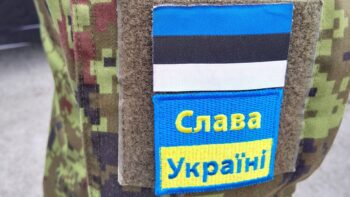Artificial intelligence and technology (Getty images)
WASHINGTON — The Army today announced an initial award to Booz Allen Hamilton and Red Hat for Project Linchpin, the service’s first program of record to help build out a trusted artificial intelligence (AI) and machine learning (ML) pipeline.
“With a combined value of up to $2M, this contract will support research efforts for Project Linchpin with specific regard to the principles of Traceability, Observability, Replaceability, and Consumability (TORC),” according to the announcement. “The TORC framework seeks to ensure model and data integrity, data openness, and modular open system architecture (MOSA) design.”
Through Project Linchpin, a relatively new effort for the Army, the service wants to develop an AI/ML operations “environment” for its intelligence, cyber and electronic warfare sensor systems. According to a request for information posted last year, the environment will deal with sensors sources like Synthetic Aperture Radar, Radio Frequency spectrum, Electronic Intelligence, Full Motion Video and 3rd Generation Forward Looking Infrared.
The Army’s Program Executive Office for Intelligence, Electronic Warfare and Sensors (PEO IEW&S) “will use Project Linchpin to develop and deploy trusted AI & ML capabilities to intelligence, cyber, and electronic warfare sensor systems,” Col. Chris Anderson, project manager for intelligence systems and analytics, said today.
“This contract is a significant first step to decouple AI from software, decompose components within a [machine learning operations] pipeline, and wrap layers of security around the entire process,” he added. “These design principles will allow the Army to leverage the best of breed technology available across industry, academia, and government.”
Today’s award has a period of performance for six months with “option years of no more than five years” and is the beginning of many anticipated contracts for Project Linchpin, the announcement says.
In an Aug. 16 interview with Breaking Defense, PEO IEW&S leader Brig. Gen. Ed Barker said the Army would use a multi-vendor approach for the effort, and there are opportunities to integrate it with other programs.
But while the Army is moving ahead on Project Linchpin, officials have previously voiced their concerns about the scope of the effort. Then-PEO IEW&S leader Mark Kitz said during an Army industry technical exchange meeting in May that the “ambition” of the program made him “nervous.”
“We can’t answer all of our AI/ML ops questions with the initial iteration of Linchpin… We’ve got to scope Linchpin around specific areas, specific problems sets, specific datasets…This is not the AI/ML ops pipeline in FY24 for all of Army datasets,” he said then.
He added that the Army still needed help defining its “ecosystem” — something industry could help with.
“We need to embark on this as a partnership to steward an environment,” Kitz said in May. “Not one system, not one model, not one environment, but an ecosystem that allows us to deploy capability relatively rapidly… And so really I ask for your help in defining this ecosystem and iterating, understanding where to get some things right, and we’re going to get a lot of it wrong up front, and your help is critical in being able to define this because at its core, I don’t think we can afford AI and ML unless we do it this way.”






















